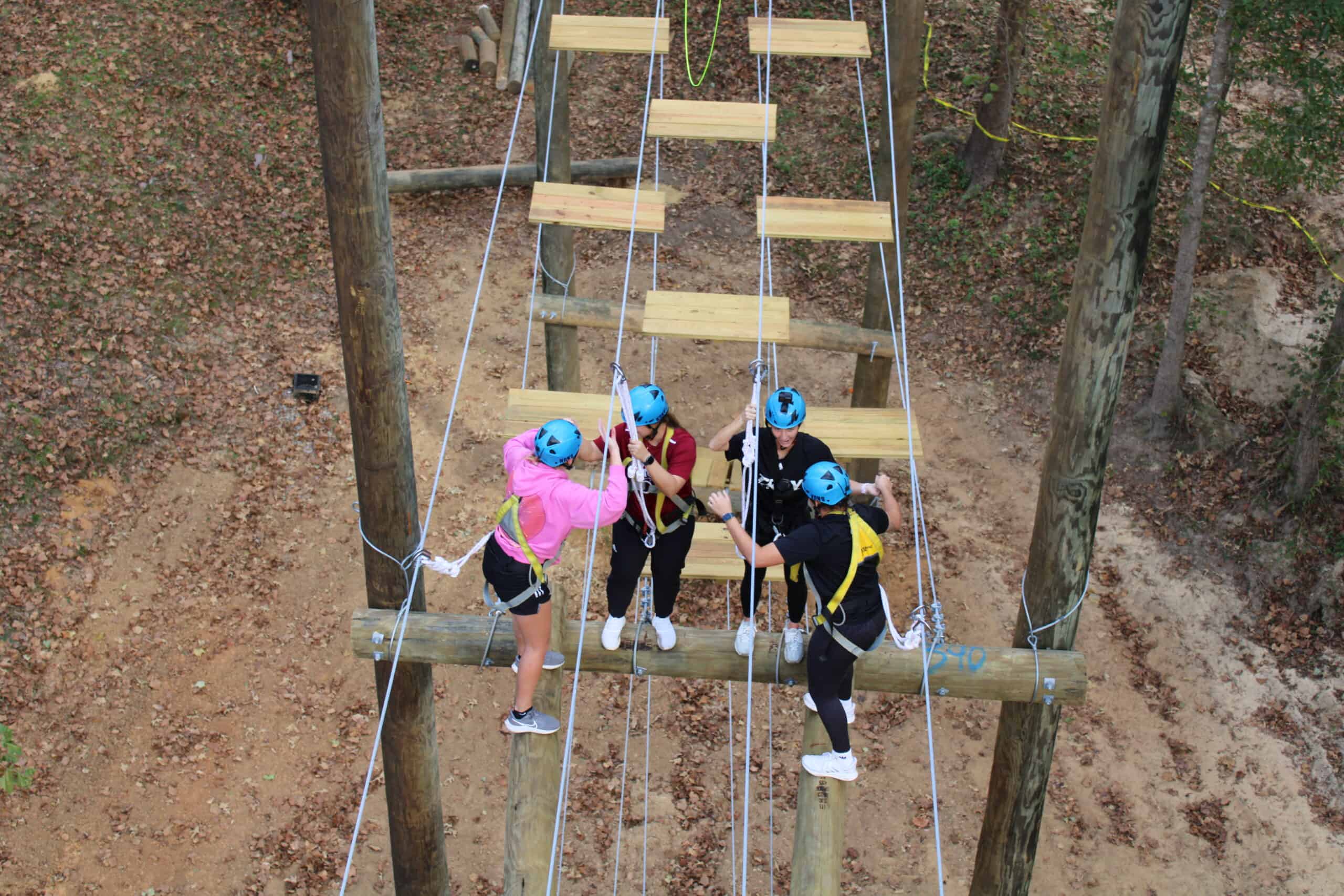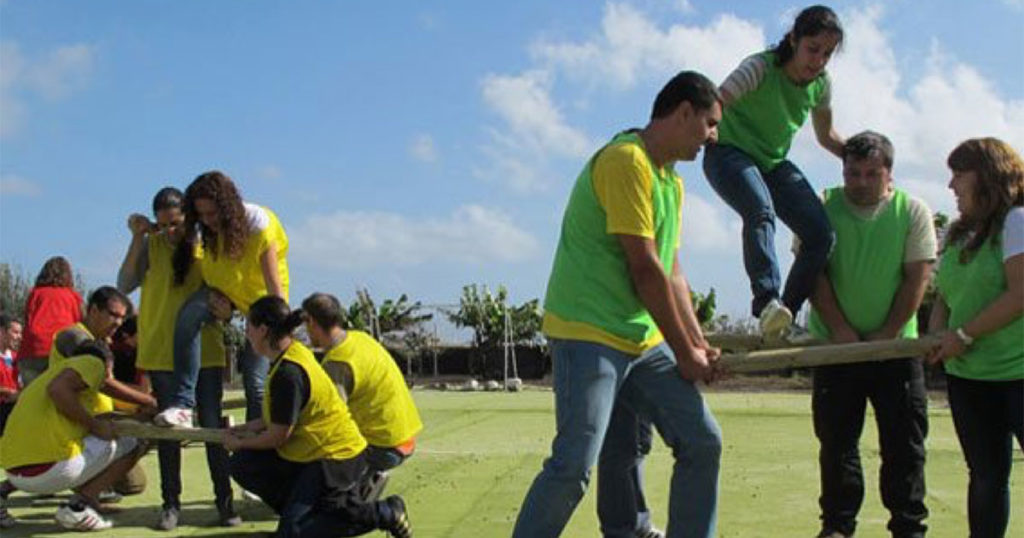Discover the Leading Team Challenge Course in Alabama for Effective Team Structure
Discover the Leading Team Challenge Course in Alabama for Effective Team Structure
Blog Article
Immerse Your Group in a Dynamic Challenge Training Course Experience for Development and Unity
In the realm of group advancement and communication, the use of dynamic challenge courses has actually emerged as an engaging method to cultivate growth and unity among group members. As groups deal with these tests together, they are typically confronted with the possibility to discover untapped possibility, deepen bonds, and reveal brand-new techniques for functioning collectively in the direction of typical objectives.
Benefits of Dynamic Difficulty Courses
Joining dynamic difficulty training courses uses teams a hands-on chance to create important communication and analytic abilities in a physically interesting environment. These courses offer an one-of-a-kind setup where group participants are encountered with various obstacles that require partnership, efficient interaction, and quick decision-making to get rid of. By participating in tasks such as high ropes training courses, team building video games, and analytical obstacles, participants are pushed out of their comfort zones, fostering personal and team growth.
One considerable advantage of dynamic difficulty courses is the enhancement of communication skills within groups. With facing difficulties with each other, group members learn to connect extra efficiently, listen proactively, and offer clear directions to one another. In general, dynamic obstacle courses supply a holistic strategy to group growth, combining physical task with skill-building to advertise unity and development.
Group Structure Through Barrier Navigation
Browsing challenges as a group provides an unique chance for cultivating cooperation and reinforcing interpersonal connections within a team. The procedure of overcoming challenges together calls for efficient interaction, trust, and common support. Barrier navigating on a dynamic difficulty training course motivates employee to count on each other's strengths, analytical abilities, and strength. By facing psychological and physical hurdles as a cohesive system, team members learn to take advantage of private abilities for the cumulative benefit of the group.

Enhancing Interaction Skills and Trust Fund
Building upon the structure of strengthened interpersonal relationships developed through conquering challenges as a team, the emphasis now shifts in the direction of enhancing interaction abilities and cultivating count on within the team dynamic. Effective interaction is important for making sure that staff member recognize each other's objectives, approaches, and perspectives. By taking part in activities that require clear and concise communication, index such as navigating an obstacle course blindfolded or resolving an issue with restricted spoken hints, staff member can exercise active listening and effective expression of ideas.
Depend on is an additional essential aspect in group characteristics. Trusting your colleagues suggests believing in their capabilities, purposes, and integrity. Via collaborative challenges that necessitate a high level of trust fund, such as a trust fall or a ropes course where staff member rely upon each other for safety, people find out to allow go of anxiety and uncertainty, cultivating a feeling of unity and communication within the group. By sharpening interaction abilities and constructing depend on, groups can accomplish higher harmony and productivity.
Promoting Camaraderie and Unity
Unity amongst team participants is the keystone of a strong and cohesive team dynamic, crucial for achieving shared goals and fostering a sense of anonymous friendship. Cultivating camaraderie within a team can be accomplished with numerous tasks throughout a address vibrant obstacle course experience. By taking part in difficulties that need teamwork and control, group participants develop a deeper connection and understanding of one another, leading to a strong sense of unity.

Methods for Long-Term Group Growth
By specifying specific targets, group members can straighten their initiatives towards an usual function, fostering inspiration and responsibility. Urging open dialogue, supplying constructive comments, and proactively paying attention to team members can improve partnership and trust within the group.
In addition, purchasing constant understanding and development chances can help staff member get new abilities, stay engaged, and adjust to evolving difficulties. Whether via training programs, workshops, or mentorship initiatives, giving methods for personal and expert development can contribute to the team's general success. Additionally, acknowledging and commemorating success, both little and huge, can boost morale and strengthen a favorable group society. By implementing these techniques constantly, teams can navigate challenges, accept modification, and grow in the future.

Conclusion
To conclude, dynamic difficulty programs use many advantages for group growth and unity. By engaging in challenge navigation, employee can enhance their interaction abilities, construct trust, and foster sociability. These experiences give a system for lasting group growth and development, causing a much more effective and cohesive group dynamic. Accepting the obstacles offered in these programs can eventually result in a stronger and extra unified group.
In the world of group advancement and cohesion, the application of dynamic challenge training courses has arised as an engaging approach to foster development and unity among group participants. By engaging in tasks such as high ropes courses, team building games, and analytic challenges, individuals are pushed out of their convenience zones, fostering individual and group growth.
In significance, team structure with barrier navigation is an effective method to cultivate a supportive and interconnected team dynamic.

Report this page